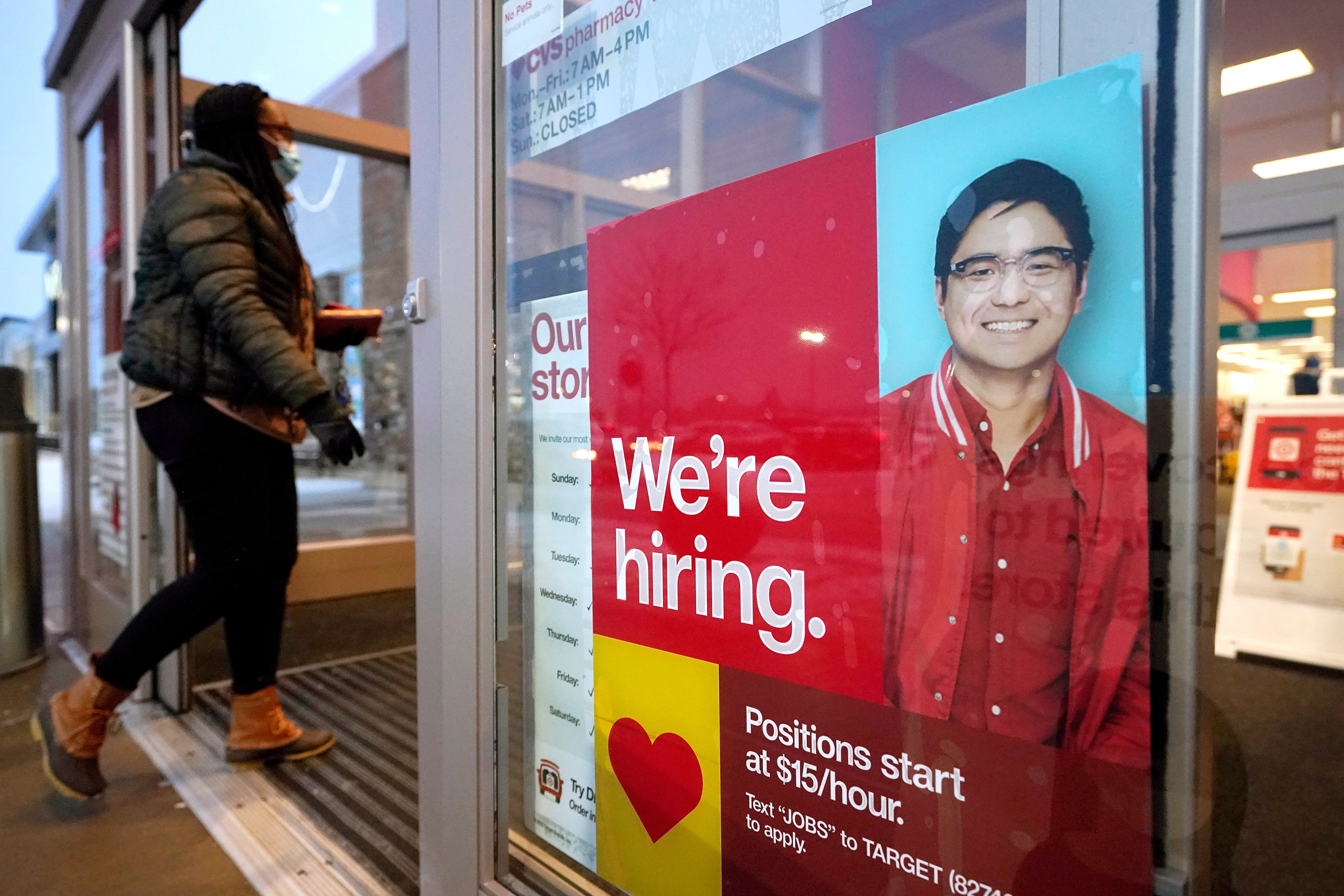US jobless claims fall to 730,000 but layoffs remain high
The number of Americans seeking unemployment benefits fell sharply last week but remained high by historical standards

Your support helps us to tell the story
From reproductive rights to climate change to Big Tech, The Independent is on the ground when the story is developing. Whether it's investigating the financials of Elon Musk's pro-Trump PAC or producing our latest documentary, 'The A Word', which shines a light on the American women fighting for reproductive rights, we know how important it is to parse out the facts from the messaging.
At such a critical moment in US history, we need reporters on the ground. Your donation allows us to keep sending journalists to speak to both sides of the story.
The Independent is trusted by Americans across the entire political spectrum. And unlike many other quality news outlets, we choose not to lock Americans out of our reporting and analysis with paywalls. We believe quality journalism should be available to everyone, paid for by those who can afford it.
Your support makes all the difference.The number of Americans seeking unemployment benefits fell sharply last week but remained high by historical standards.
Applications for benefits declined 111,000 from the previous week to a seasonally adjusted 730,000, the Labor Department said Thursday. It is the lowest figure since late November. Still, before the virus erupted in the United States last March, weekly applications for unemployment benefits had never topped 700,000, even during the Great Recession of 2008-2009.
The latest figures come as the job market has made scant progress in the past three months. Hiring averaged just 29,000 a month from November through January. Though the unemployment rate was 6.3% in January, a broader measure that includes people who have given up on their job searches is closer to 10%.
All told, 19 million people were receiving unemployment aid as of Feb. 6, up from 18.3 million the previous week. About three-quarters of those recipients are receiving checks from federal benefit programs, including programs that provide jobless aid beyond the 26 weeks given by most states.
Key sectors of the economy, though, are showing signs of picking up as vaccinations increase and government rescue aid works its way through the economy. The Federal Reserve's ultra-low-rate policy is providing key support, too.
Retail sales soared last month as many Americans spent the $600 checks that were included in a relief package enacted in December. Factory output also rose and has nearly regained its pre-pandemic levels. And sales of newly-built homes soared last month.
Michelle Meyer, an economist at Bank of America, this week upgraded her forecast for growth this year to 6.5%, which would be the fastest since 1984. Daily coronavirus infections are down more than 70% from their peak, Meyer noted, which should lead to more states and cities relaxing business restrictions.
Further economic relief is also likely, she noted, as Congress considers President Joe Biden's proposal for a new aid package amounting to $1.9 trillion.
The Fed has pegged its short-term interest rate near zero to encourage more borrowing and spending. Chair Jerome Powell stressed in testimony to Congress this week that the Fed plans to keep its rate ultra-low until the job market has recovered – even if inflation has begun to surpass the Fed’s 2% target level by then. That soothed the stock market, which had fallen in the past week on fears that rising interest rates and the threat of inflation might lead the Fed to raise rates too quickly and potentially derail the economy.
The yield on the 10-year Treasury note has risen sharply in anticipation of more robust economic growth and is now near 1.5%. At the start of the year, the 10-year yield was below 1%.
In his testimony this week, Powell downplayed the inflation risk and instead underscored the economy’s struggles, including the 10 million jobs that remain lost since the pandemic erupted nearly a year ago. That’s a deeper job loss than was inflicted by the Great Recession of 2008-2009.
But on Wednesday, Richard Clarida, a Fed vice chair, sounded a more optimistic note in remarks to the U.S. Chamber of Commerce. Clarida pointed to the distribution of vaccines and the economic relief package that the government enacted late last year as reasons for a sunnier outlook.
“The prospects for the economy in 2021 and beyond,” Clarida said, “have brightened, and the downside risk to the outlook has diminished.”
Even the ice storms and widespread power outages in Texas, damaging as they were to residents and businesses there, are unlikely to inflict a major blow on the overall U.S. economy, according to Oxford Economics.
Oren Klachkin, lead U.S. economist at Oxford, estimates that the harsh winter weather will slightly lower growth in the January-March quarter to a still-blistering 6.8% annual rate, down from a previous estimate of 7.1%.